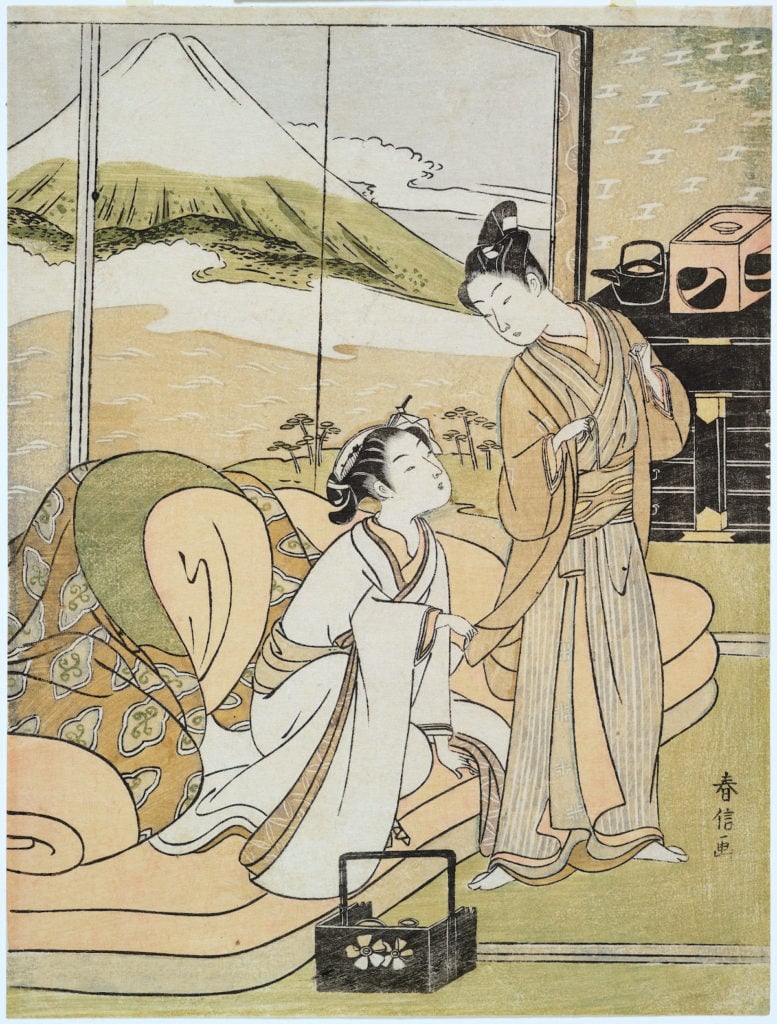Opinion
When Gender in Japan Included Men, Women—and Wakashu
THE DAILY PIC: The Japan Society's 'Third Gender' show presents Japanese youths who were expected to hover between male and female.

THE DAILY PIC: The Japan Society's 'Third Gender' show presents Japanese youths who were expected to hover between male and female.

Blake Gopnik

THE DAILY PIC (#1800): One of the most fascinating, complex shows in New York right now is the one called “A Third Gender: Beautiful Youths in Japanese Prints,” at the Japan Society. It’s about the 18th- and 19th-century woodblock prints that depict the figures known as wakashu—adolescent males whose role seemed to hover between what was expected of women and what was expected of men, and who might very well sleep with either sex. That’s the subject of today’s Pic, designed around 1768 by Suzuki Harunobu, which shows a wakashu (at right) with a female lover or courtesan.
I came away from the show thinking that even our (Western) notion of a “third gender” doesn’t get at the cultural complexities involved, since it implies that the enumeration of two separate genders should simply have another one added to it—instead of calling into question the idea of countable genders and of gaps between them.
Somehow, today’s image by Harunobu seemed to me to capture those complications especially well. The view of Mount Fuji that we see through the “window” at the scene’s left is in fact not a view but a painted screen. There’s a blurring there between nature and artifice that captures a similar blurring in the roles the two figures play in front of “Fuji.” (Sir Edmund Walker Collection, courtesy the Royal Ontario Museum, Toronto)
For a full survey of past Daily Pics visit blakegopnik.com/archive.